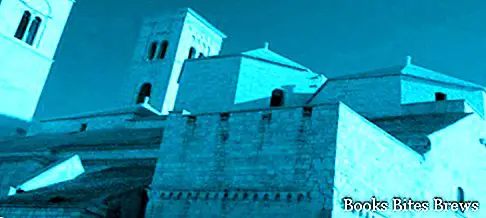What to see in Molfetta, itinerary to visit the historic center, including in main monuments and places of interest, including the Cathedral of San Corrado, the Sala dei Templari and Palazzo Giovene.
Tourist information
Molfetta is a town in Puglia overlooking the Adriatic Sea, about 25 km from Bari.
The area near the city was inhabited since prehistoric times, as is clear from the remains of a Neolithic village located on the upper edge of a karst sinkhole called the Pulo, which is located about two kilometers from the urban center of Molfetta.
Probably already around the fourth century BC. there was already a fishing village where a civitas called Melfi subsequently arose, corresponding to the current Molfetta, as shown by the first official document, dating back to 925, which attests to its existence.
The ancient core, characterized by a herringbone plant, is located on a small peninsula, open to the north on a large bay where on the opposite side stands a promontory with the sanctuary of the Madonna dei Martiri.
The history of Molfetta is linked to its open port to the east, where merchants from the Maritime Republics, Greece and Dalmatia passed, as well as a large part of the trade related to the Holy Land.
The city walls date back to the Middle Ages, of which few traces remain at present, the Old Cathedral of San Corrado, the Castello Angioino, which was located in the area of the town hall but was destroyed in 1416, and numerous small churches, in part redone in later periods in Baroque style.
What see
The Cathedral of San Corrado is the ancient Cathedral, originally dedicated to Maria Santissima Assunta in Cielo, located on the sea at the edge of the ancient village.
The building was built between 1150 and the end of 1200, and represents a precious example of Apulian Romanesque architecture.
It is characterized by three aligned domes and two magnificent bell towers, the one at midday called the bell tower because it was used as a bell tower, the other one on the lookout because it was used to spot any Saracen raids.
From the top of the tower you can admire the whole bay and see, on the opposite side, the Basilica of Our Lady of the Martyrs with the adjacent Crusaders Hospital, where pilgrims who were staying or returning from the Holy Land were housed.
Recommended readings- Trani (Puglia): what to see
- Puglia: Sunday day trips
- Manfredonia (Puglia): what to see
- Vieste (Puglia): what to see
- Altamura (Puglia): what to see
In 1785 the seat of the Cathedral was transferred to the current Cathedral of Santa Maria Assunta in Cielo and since then the Old Cathedral took the name of the patron San Corrado.
The Cathedral of Santa Maria Assunta, a Baroque building, was formerly the church of the Jesuit complex in the city, after the suppression of the order it was transformed into the new Cathedral.
In Piazza Municipio there is the Sala dei Templari, where once stood a church dedicated to San Nicola and a Temple House of the Order of the Templars.
Today inside the room you can see the previous structures, left exposed, which are incorporated into the current one.
The Hall hosts exhibitions of contemporary artists, cultural meetings and conferences.
Palazzo Giovene, in Renaissance style, is also located in Piazza Municipio, where inside you can admire the Gallery of Contemporary Art and the Civic Siloteca, the only museum dedicated to the trees of southern Italy.
Torrione Passari, dating back to 1512, overlooks the sea, a cylindrical fortification built to defend the city against attacks by the Turks.
The top of the Torrione offers a beautiful view of the surrounding landscape, also the structure is now home to exhibitions of contemporary art.
Also worth a visit is the Church of Santa Maria del Principe, known as the Church of Death, because in the seventeenth century it was given in concession to the Confraternity of Death.




